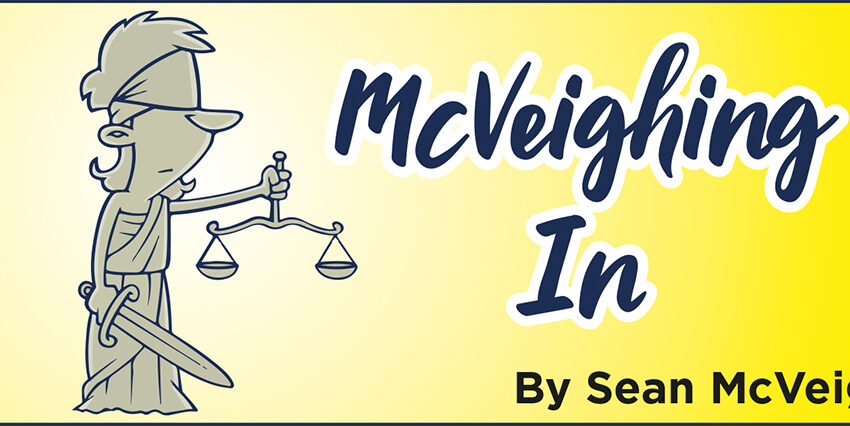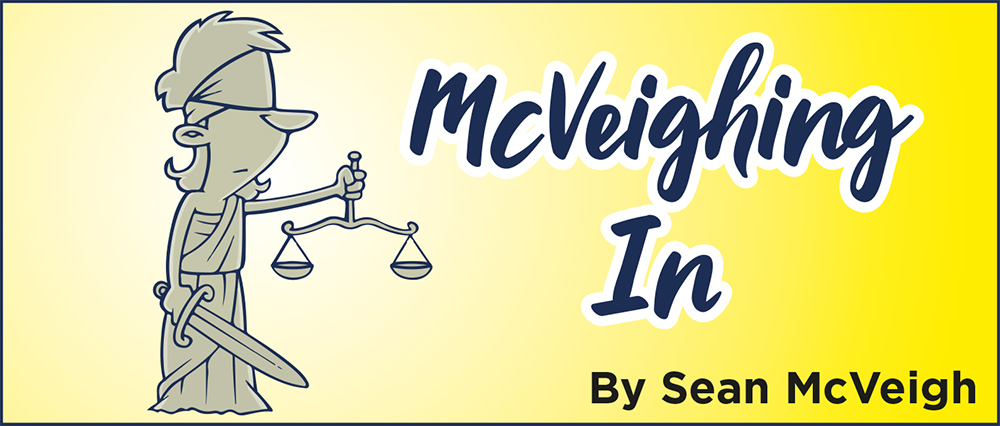Auld Lang Syne

By Sean McVeigh
New Year’s Eve has to be one of my least favorite holidays. For starters, the whole night revolves around forcing myself to stay up late. On New Year’s Eve, 11 p.m. feels like 4 a.m. By the time the ball drops, I am ready to call it a night. Because the main portion of the night isn’t until midnight, the show takes forever to get on the road. There is so much waiting around that I lose the desire to do anything. What kind of holiday doesn’t actually begin until after dinner? I guess I’m more of an eat-and-drink-all-day-holiday kinda guy: Thanksgiving, Christmas, Rockaway St. Patrick’s Day — you know, the big three. There are a few exceptions to my dislike though. Every once in a while, someone manages to throw a good shindig. For example, my brother and sister-in-law got married on New Year’s Eve and it was tremendous. If you need a guest to your wedding on Sunday, I’m free.
One of the few bright spots mixed into this dark, winter holiday is the singing of “Auld Lang Syne.” Wherever I find myself this New Year’s Eve (maybe your wedding?), I will make sure this gets belted out at midnight. This song came up in conversation on Christmas this year and it got me thinking: Auld lang syne is not even English — do we know what we’re talking about here?
So, how about a little background? Let’s see if I can put my factologist cap on here for a second. “Auld Lang Syne” is a Scottish song and poem with roots that date back for centuries. It was brought to its modern form in the late 18th century by the famous Scottish poet Robert Burns and put to the tune that we know today shortly thereafter. The song eventually spread from Scotland through the British Isles and Ireland and then the world. The phrase auld lang syne translates in English to “old long since” but in a less literal translation comes out to “days gone by,” “times long past” or “old times.”
Now that we at least have an idea of what we’re saying, maybe we can start to understand the purpose of the song a little more. It begins by asking a couple of questions:
Should auld acquaintance be forgot, and never brought to mind? Should auld acquaintance be forgot, and auld lang syne?
Should we allow ourselves to forget old acquaintances? Should we allow ourselves to forget the times gone by? It has come to fit so naturally with the New Year because it is the perfect time to reflect on the past. Here we are at the end of something. 2023 — and every other year, for that matter — are behind us now. Not just the years, but all of the people too.
It’s happened to all of us, friends come and go. That is just part of life. The older I get, the more I see it happening right in front of my eyes. Regardless, at one point, these people were in our lives. So, the song suggests, let’s not forget them. We should not only remember those who we have grown apart from, but also those who are still very much in our lives today. So, this New Year’s Eve, let’s raise our glasses to all those who have made an impact in our lives — those here today and those who aren’t.
We’ll take a cup of kindness yet, For auld lang syne!
*****
This edition of the Rockaway Times marks our one-year anniversary at the helm. It has been a year of ups and downs — mostly ups, thankfully. We have had one heck of a learning experience and now, entering 2024, we are a year older and a year wiser. I wanted to take this space to say thank you to all of our readers for supporting us and supporting our loyal advertisers each and every week. We literally could not do it without you! We appreciate every one of your emails, every phone call you make to us, every message on Facebook and comment on Instagram, whether it is positive or negative, because it means you care, it means you’re reading! So, from all of us here at The Rockaway Times, THANK YOU!
Here’s to a happy and healthy 2024! Cheers!


